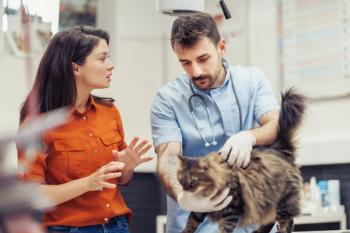
How to adopt a kinder approach to feline care in the clinic
Learn how veterinary clinics can create a more positive experience for felines during veterinary visits this National Take Your Cat to the Vet Day.
In this video, Ellen Carozza, LVT, VTS (CP-Feline), talks about what veterinary teams can do to make veterinary visits less stressful for cats. She highlights the concept of “stressor stacking,” noting that many feline patients arrive at the clinic already overwhelmed by accumulated stress. Carozza also notes that fearful behaviors should be recognized as fear responses, not aggression. With this in mind, she encourages veterinary teams to adopt a compassionate approach, which includes respecting the patient’s boundaries, reading their emotional cues, and tailoring care with tools such as breaks, treats, cooperative handling, or additional staff support.
Below is a partial transcript, lightly edited for improved clarity.
Ellen Carozza, LVT, VTS (CP-Feline): For those of us in the clinic, how can we make things better for the cats we see in practice? We can always recognize the stressor stacking that these cats experience before they even come to see us, because we know everything starts at home, and then all those little stressors begin to stack up to the point that when the cat comes and sees us, they're already beyond the emotional capacity that they are able to handle. We need to recognize that these cats are acting out of fear and stress.
They're not aggressive, they're not mean, they're not spicy. It's a big fear response. Once we start respecting these cats, understanding their boundaries, [and] learning their emotional behaviors, it makes it a lot easier for us to actually provide a plan of action when working with these cats.
And then we know ahead of time: Does this cat need a little bit of something to be sent home with to work with them safely in the future? Does this cat need many breaks during our physical exam...? Does this cat need cooperative care? Can...distract this cat with someone just talking to them or providing some treats? Maybe 3 or 4 people need to be involved with this situation. It makes it so much better for the cat. And to the client, it provides a higher level of care that we actually care about this cat's emotional and physical distress at that point in time, and we're going to address it in a much kinder manner.
When we look at the cat as an emotional being vs just the task that we have to work with them on, it makes working with them much, much easier. That's something we really need to respect with these cats: their boundaries and their emotional state of mind that day.
Newsletter
From exam room tips to practice management insights, get trusted veterinary news delivered straight to your inbox—subscribe to dvm360.






